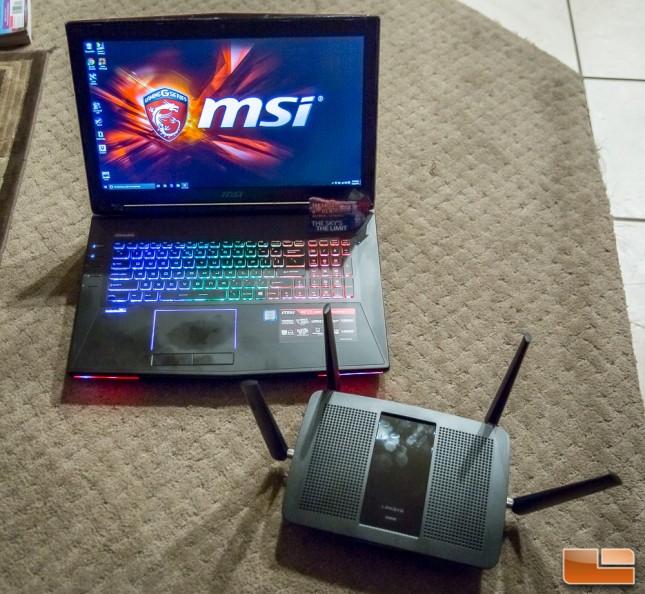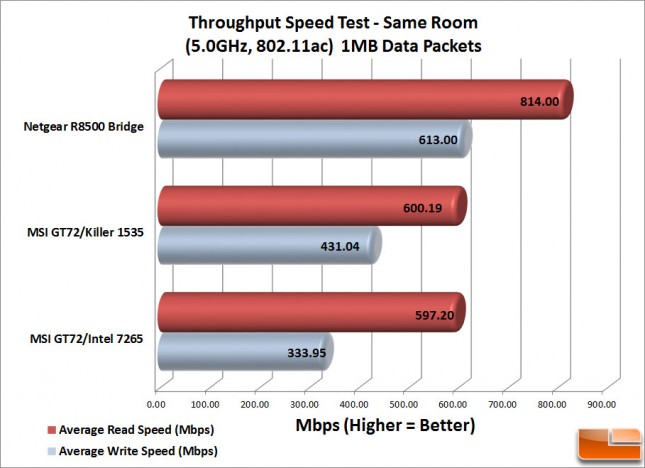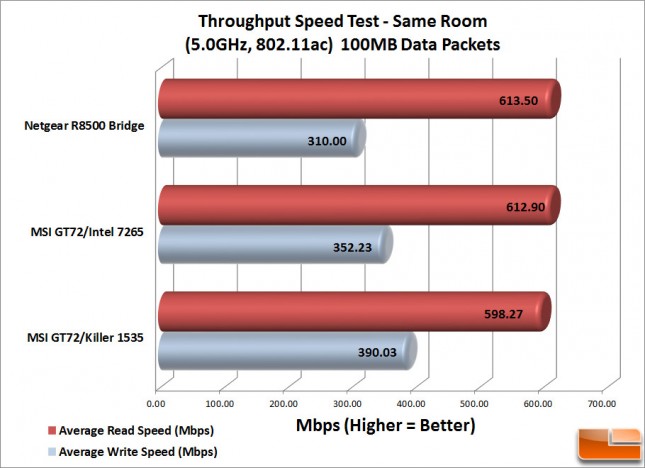Rivet Networks Killer Wireless-AC 1535 MU-MIMO Card Review
Real-World Testing of Killer Wireless-AC 1535
In order to understand this technology, we had to be very deliberate in choosing the way we evaluated the Killer 1535. Of course we compared ultimate throughput speeds as we normally do with any network device in the Legit Bunker, but this time, we were able to look and compare one of Intels latest wireless devices with the Rivet Killer 1535.
Our first test was a simple speed test that we used with Netgears latest flagship router, the R8500. The Netgear Nighthawk X8 is the first router designed with active antenna technology that helps to improve overall WiFi performance by amplifying the signal through the antennas themselves. The X8 has 4 internal antennas for the 5GHz Band (Channel 148-161) and 4 external antennas for 2.4GHz and 5GHz Band (Channel 36-48). The R8500 is loaded with features, but for our purposes, we are interested in getting some the best throughput from a router to test the limits of our laptop wireless cards.
We took our Killer 1535-equipped MSI GT72 laptop and paired it with the Netgear R8500 and didnt tell the client anything more than the SSID name and let it automatically choose the channel to connect to. For the fastest possible data throughput, the router was set to Unsecure Mode and with WMM turned ON. After connecting, we ran the application LAN Speed Test (LST) to measure file transfer and network speeds. LST builds a file in memory and then transfers the packet without the effects of windows file caching. It then reports the time and calculates the network speed.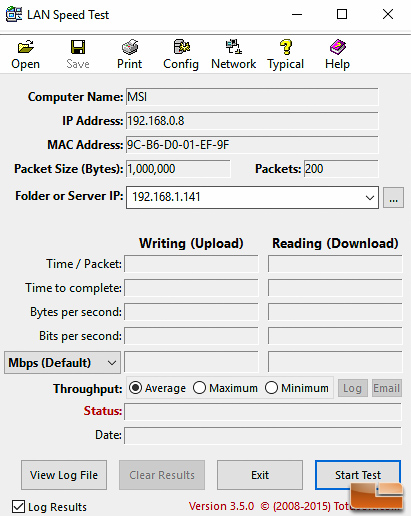
For this test, you will see three sets of devices reported, the Rivet Killer 1535, the Intel 7265, and Netgear R8500 used as a wireless network bridge. We feel that the Netgear wireless bridge will give us throughput speeds closest to our routers theoretical maximum.
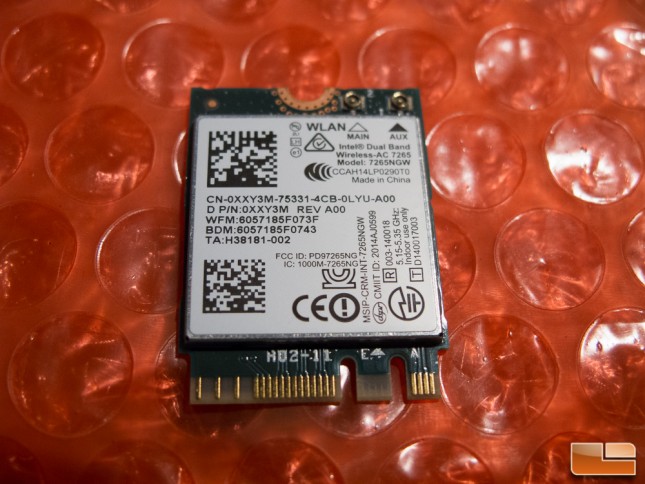 The Intel Dual Band Wireless-AC 7265 is one of the most popular wireless devices on the market today found in a multitude of laptops. Running on 802.11ac, it features; 2 x 2 Wi-Fi and an included Bluetooth adapter.
The Intel Dual Band Wireless-AC 7265 is one of the most popular wireless devices on the market today found in a multitude of laptops. Running on 802.11ac, it features; 2 x 2 Wi-Fi and an included Bluetooth adapter.
Our tests were conducted in the same room where our test laptop was 9.5 feet away from our router.
Benchmark Results: We can actually see quite a bit when we examine the test results shown above. First off, our Netgear R8500 Wireless Bridge excels in this test clocking in at average of 814 Mbps. This is one of the fastest results we have seen using LSTas well it should! Using the Netgear R8500 Bridge shows us what is probably the fastest the router can perform at this distance. The Killer 1535-equipped MSI GT72 show excellent Average Read and Write speeds (600/431Mbps), while the Intel 7265 equipped GT72 posts similar speeds in Average Read (597 Mbps), but falls off with Average Write speeds (334 Mbps). Overall, the Killer 1535 is a very fast device when used to move data packets of 1MB around.
Benchmark Results: We use 100MB data packet sizes to simulate what is happening on a network with high amounts of Multimedia or Streaming traffic. Our 100MB throughput tests show that all of our devices perform relatively the same when it comes to Average Read Speeds. Clocking in little over 600 Mbps, the Netgear R8500 bridge edges out the Intel-equipped MSI GT72 and the Killer 1535 MSI GT72 is only slightly behind them at just under 600 Mbps. Average Write Speeds were similar as well with the Killer 1535 leading the bunched up pack with throughput speeds of 390 Mbps while the Netgear Bridge clocks in at 310 Mbps and the MSI GT72/Intel 7265 splitting them with 352 Mbps. These test results should result in very smooth viewing of high definition content when sharing files on this network.

